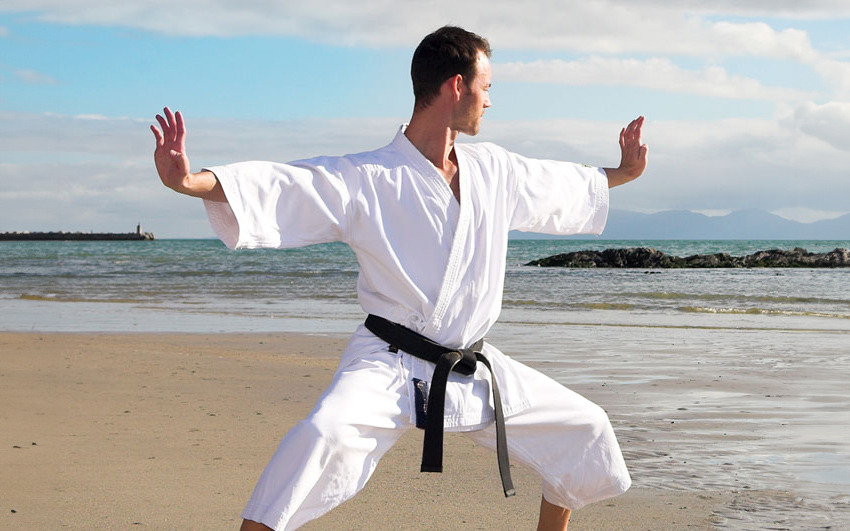What is the Purpose of Kata in Karate?
Discover the origin, history and meaning of Kata.
Along with kihon and kumite, the practice of kata is an integral and essential part of karate training. To truly understand its purpose and meaning, it is necessary to understand not only its complex history but also its numerous benefits.
The regular practice of kata is essential as it develops the proper body mechanic, help builds muscle memory, develops mindfulness and favors the adequate execution of breathing, but its purpose is actually the core of karate. Let’s delve into this together and discover the ultimate aim of kata.
Understanding Kata Through it’s Origin and History
If we want to understand the purpose of kata, it is essential to have some understanding of the history and development of karate as a whole.
As you know, the art of fighting that came to be known as karate was developed hundreds of years ago on the island of Okinawa. Formerly known as the Ryukyu Kingdom, modern-day Okinawa is a chain of subtropical islands that lies approximately halfway between China and Japan.
The Ryukyu Kingdom always had a commercial and cultural relationship with mainland Japan, but around the 10th century, the Kingdom started to have active commercial exchanges with China.
In 1377, the relationship intensified as the king of Ryukyu expressed his allegiance to the Emperor of China, which resulted in a significant influence of Chinese culture and customs in the Kingdom.
Four Events that Forged the History Kata and Karate
Three major events shaped and sculpted not only the future of Karate but also had a profound influence on the development of kata in Okinawa.
1. Thirty-six Chinese families were sent to Ryukyu
In 1393, the Ming Dynasty sent over a large group of 36 families from Fujian Province (China) to make a permanent Chinese settlement in Kume village, present day Naha (Okinawa).
The group was comprised of bureaucrats and craftsmen who taught a variety of Chinese skills, arts, and customs to the people of Ryukyu: astronomy, navigation, shipbuilding, written language, medicine, papermaking, etc. The Ryukyuans adopted the Chinese lunar calendar, as well as clothing styles, Government system, and Confucian style education. They also brought with them the tradition of the Dragon Boat races, which is still celebrated today in Okinawa.
Of course, Chinese martial arts, more precisely Fujian Kung-Fu, were included in this cultural exchange and had a massive influence on the growth and development of the native Ryukyuan empty-handed fighting system.
These Chinese fighting methods were adapted and further developed by the Okinawans and came to be known as Te (meaning “hand” in Japanese) or Tode (“Chinese hand”) and will be later known as Karate.
Contrary to popular belief, early Tode (karate) was not practiced by Okinawan farmers, but by the Ryukyu aristocrat class called Yukatchu. Old Ryukyuan documents recently discovered confirm that Tode was only practiced by the Yukatchu class.
The Yukatchu existed in Ryukyu for centuries and were part of an elaborated caste system. They were an aristocratic class of scholar-bureaucrats in charge of the Royal bureaucracy, and also served as government officials within the Kingdom. They also served as diplomats in relations with China, Japan, and other countries.
Back in the days, Kata was the primary form of transmission of martial arts, and it goes without saying that the immigrating Chinese Kung-Fu masters shared their kata with the Ryukyuans.
At the time, each master would know only a handful of kata but masters them to the point of perfection and was passed down from generations to generations.
2. The King’s ban on weapons
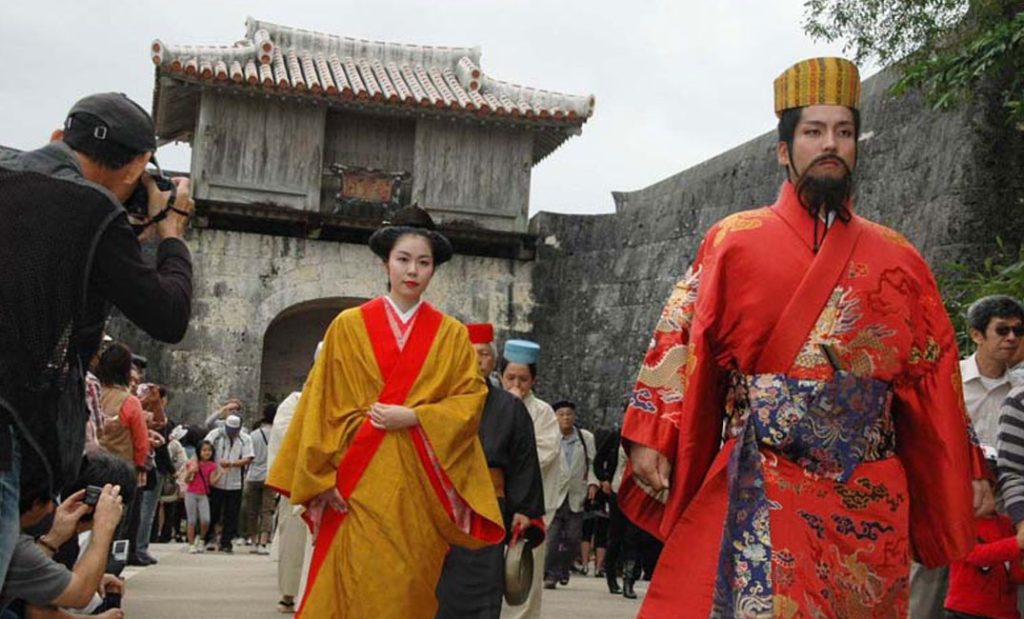
In 1477, King Sho Shin imposed a ban on the private ownership of weapons. The strategy of restricting the carrying of personal weapons such as swords was one of the steps to reduce the power of Aji or regional Lords and avoid rebellion.
Contrary to popular belief, the King Sho Shin didn’t ban all weapons from Okinawa (still called Ryukyu at the time), he prohibited the carrying of swords in public. He also consolidated the storage of weapons for the royal court in warehouses to be used only for the purpose to defend the country.
This event had a significant effect on the evolution of Karate’s kata. The banning of weapons resulted in Yukatchu to focus even more on their unarmed combat skills and acted as a catalyst in the advancement and development of kata as a way of transmitting the art of the Chinese Hand.
3. The Satsuma invasion
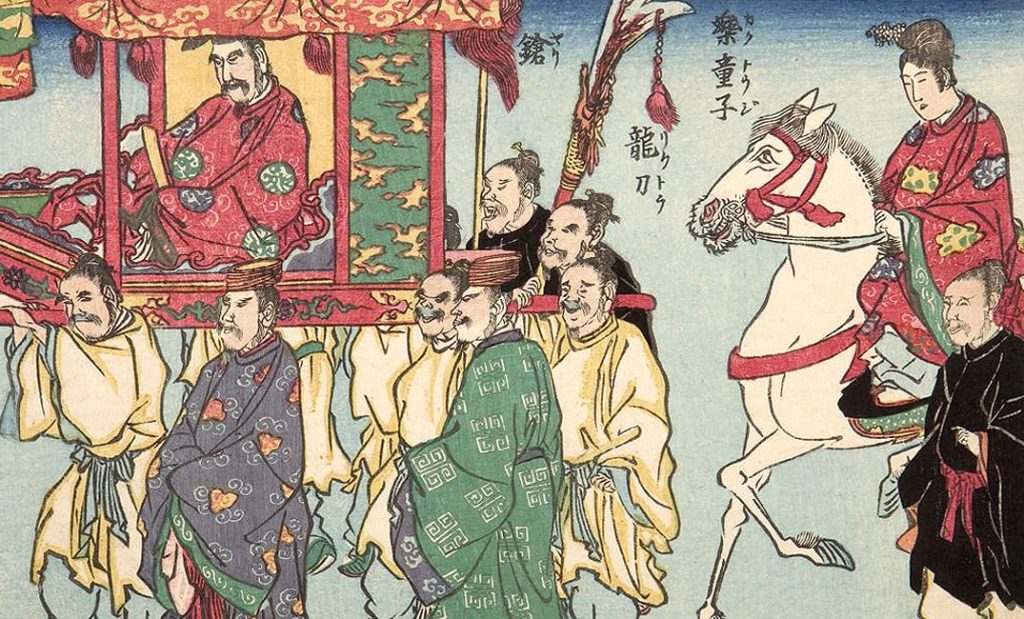
Another event that had a significant influence on the development of Tode and kata was the Satsuma invasion. In 1609, under the influence of the Tokugawa shogunate (Japan), the Satsuma clan invaded the Ryukyu Kingdom.
The invasion itself involved few casualties, as Ryukyu had little military strength compared to the 3000 Satsuma samurai armed with guns and more than 100 ships. The people were quickly ordered by King Sho Nei to surrender and to prevent any bloodshed. The King and other vassals were kept hostage in Kagoshima Japan for about two years.
The Satsuma invaders also banned weapons and martial arts from Ryukyu. It is believed that the tense social climate helped refine Karate as a form of unarmed combat. Some historians claim that Karate was taught and practiced in secret, at night on beaches or in caves along the Okinawan shores.
This second ban also contributed significantly to the development of Kobudo, an Okinawan martial which uses common household, fishing and farming tools as weapons.
Further refinement came with the influence of Tode master who went to study fighting arts in China.
4. Ryukyuan and Okinawan Masters studying Kung-Fu in China
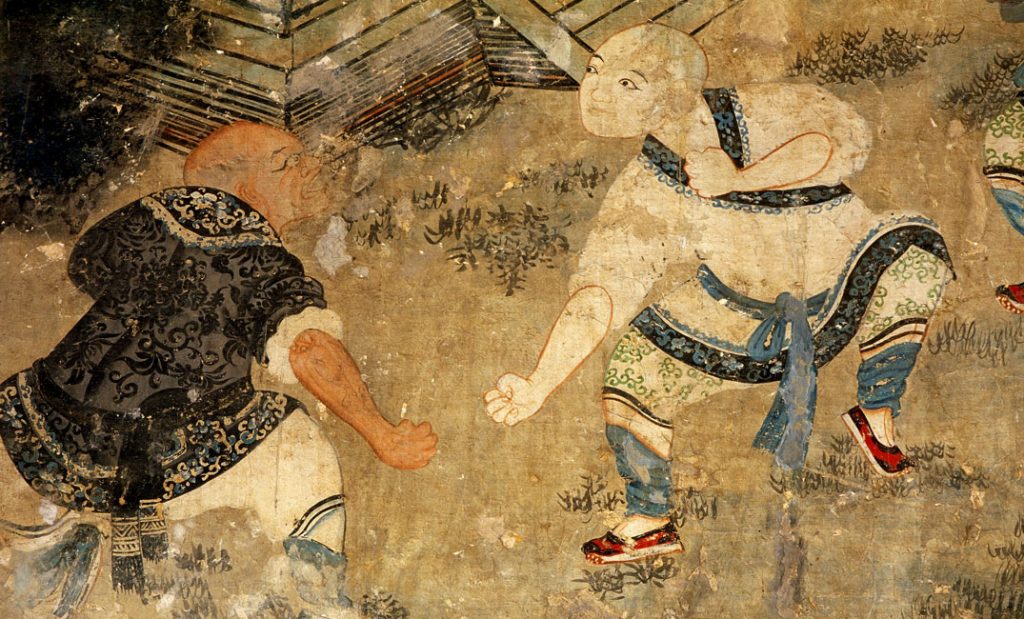
Throughout history, members of Ryukyuan upper classes were regularly sent to China, by the King, to study various political, cultural and martial disciplines.
Between the 17th and 20th centuries, many influential martial artists went to China to study Chinese martial arts and brought back with them many katas. Here are a few:
- Peichin Takahara (1683-1760),
- Matsumura Sōkon (1809-1899),
- Sakugawa Kanga (1733-1815),
- Seisho Aragaki (1840-1918),
- Kanryo Higaonna (1853-1915),
- Kanbun Uechi (1877-1948),
- Chōjun Miyagi (1888-1953)
Master Ryu Ryu Ko (1852-1930), a.k.a. Xie Zhongxiang in Chinese was a Chinese teacher of Fujian White Crane Kung-Fu and is famous for having taught many Okinawan karate master and founders of Okinawan Karate styles.
Ryu Ryu Ko was born in Fujian (Fukien) province, Southern China, into a noble or aristocratic family, and learned the art of fighting at the Shaolin temple located in the mountains of Fujian.
Ryu Ryu Ko was a tall man for a Chinese man he was around six feet tall, with an athletic and muscular physique that made him fast. He was more than capable of handling himself if confrontation or a challenge arose. He excelled in the art of hand-to-hand combat and was known to have a grip of great strength. He was also teaching the use of weapons and herbal medicine.
According to historians, Ryu Ryu Ko had only about 4 or 5 students. This was probably because Ryu Ryu Ko was a rigorous and strict teacher. He was teaching his pupils Fujian White Crane Kung-Fu, and focus a lot on kakie (pushing hands practice), ude tanren (arm conditioning), hojo undo (weight training equipment), and the bo (staff).
Ryu Ryu Ko’s shared his knowledge of kata to many Okinawan masters like Higaonna Kanryo (founder of Naha-te), Arakaki Seisho, Norisato Nakaima (founder of Ryuei-Ryu), Sakiyama Kitoku, Kojo Taite, Maezato Ranpo, Matsuda Tokusaburo.
Amongst the numerous kata he was teaching, Sanchin was the most prominent. Today, Sanchin is the primary kata of Naha-te based styles of Karate like Goju-Ryu and Uechi Ryu.
What is Kata?
Kata, a Japanese word meaning “form”, is a system of individual training incorporating highly practical combat techniques and notions that have been cultivated and polished for centuries.
Ancient masters wouldn’t write down their fighting techniques or draw them on paper as it wasn’t convenient. Instead, they created numerous solo combat forms used to store or record the various series of combat movements and concepts. These forms make it easier to remember and to pass to pass down to future generations. That’s what modern science called a mnemonic tool.
To the untrained eyes, kata can appear to be dance-like drills, but in reality, they contain the fundamental principles and concepts of Karate like stances, footwork, punches, kicks, blocks, holds, and throws.
It might sound obvious, but kata requires lots of training and repetition to master. In fact, it takes years of practice to execute and understand a kata fully.
The vast majority of kata that are practiced today’s dojo can be traced right back to China and Okinawa (Ryukyu). Karate kata was pretty much the only way karate was taught up until the 1930s.
Without Bunkai, there is not kata.
Misconceptions About Kata
Unfortunately, over the years, I’ve noticed that most karate practitioners don’t have a solid understanding of what kata actually are.
Here are the most common misconceptions about kata.
Misconceptions #1: Kata is an Imaginary Fight Against a Group of People
That’s probably the most common and disturbing misconception. No, kata is not about fighting a group of people, that’s just not what they were designed for. If this is your vision of kata, you have been profoundly misguided.
Ancient Chinese and Okinawan masters knew that even a simple confrontation can be enormously chaotic and unpredictable so there is no way they would codify a fight against a whole group of people.
Misconceptions #2: Kata’s Don’t Have any ‘Real World’ Application
It is essential to understand that all movements within the katas are designed for to be used in real fights or combat. Please allow me to formulate this again in different words. The principal purpose of kata movements and techniques is to disable an attacker in an actual physical conflict.
Again, if that’s what you think, you are clearly lacking understanding of the purpose of kata. Don’t be afraid to go back to the drawing board, research, study, try to understand the essence of each movement, and you’ll appreciate it’s practicability.
PS: Visit Iain Abernethy’s YouTube channel to see real life, practical kata application.
Misconceptions #3: Kata’s are Filled With “Hidden Techniques”
Many people believe that kata are filled with “hidden” deadly techniques and moves waiting to be unlocked. Some say that techniques were hidden in kata during the Satsuma Invasion to hide or shield them from the invading samurais. I don’t think that’s true.
Why would you want to hide “deadly” techniques into an obviously martial looking form? I mean, even back then, it was obvious by looking at kata that they were martial oriented. Nobody looked at a form and said: “Oh, what a beautiful innocent looking and charming local dance.” Kata was a martial form, and it showed.
I think the real reason why people say that the actual techniques of kata are hidden is simply that they don’t know the real applications of the forms. Most people are clueless regarding the practical use of kata.
Not many people actually took the time and effort to study and try to understand the real meaning and applicability of techniques contained in kata.
Kata is a Combination of “Micro-Sequences”
As I previously said, kata should not be seen “as a whole” or as a continuous combat scenario against multiple opponents.
In reality, each kata is composed of dozens of specific “micro-sequences”. Try to break down and see the techniques of kata on a smaller scale. What do I mean by that? Well, one technique should be dissected into pretty much one attack from the opponent , then followed by your defense and counter-attack(s). That’s it.
If you try to see kata as a confrontation against numerous opponents coming out of every corner, you’ll not only lose its meaning, but also it’s practicability. That’s, in my opinion, one of the main reason why people see kata as being unrealistic in real life.
So try dissecting the movements of kata to their most simple, minimal form, and you’ll start to see the effectiveness of it.
Why is the Practice of Kata Important in Karate?
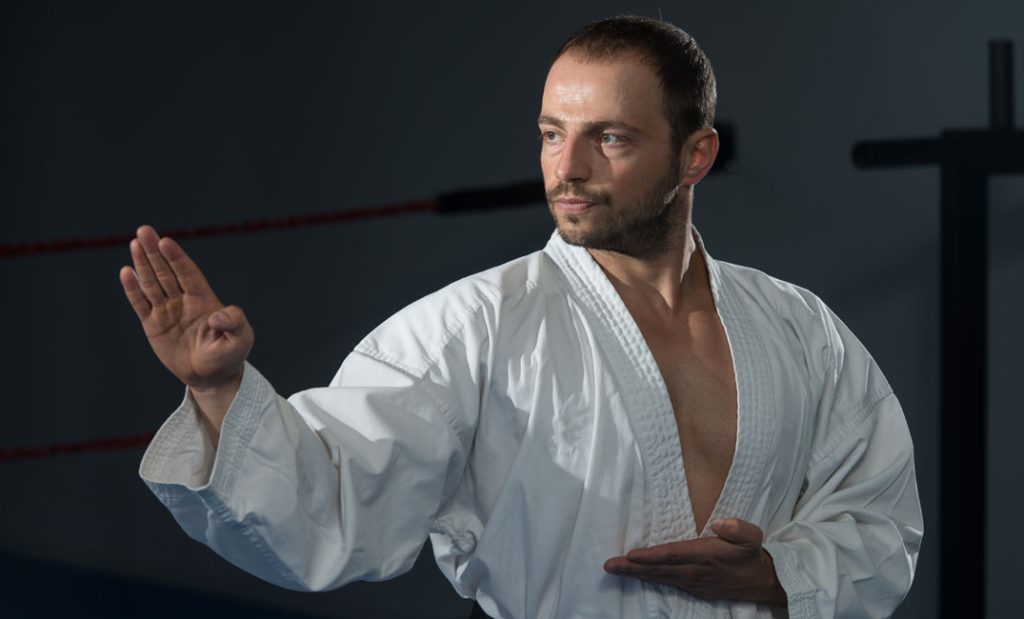
Forms or kata has always been at the heart of traditional Chinese and Japanese martial arts. Traditional martial artists see kata as a fundamental Karate training tool.
Kata may seem unrealistic to someone inexperienced, but don’t let that fool, countless benefits can be obtained from their practice.
Let’s examine why training kata is so important.
1. Develops Proper Body Mechanics
Kata helps refine techniques and improve proper body mechanics associated with the execution of techniques.
Correct execution of kata helps you practice generating power in your techniques as most of your power comes from your hips and your core, not from your arms and legs. Katas also allow you to practice speed, precision, and explosiveness.
The practice of kata is an excellent tool for developing proper footwork and balance as it helps keep your center of gravity in the right place. Kata is also an excellent tool for learning to use your hara into every movement.
2. Builds Muscle Memory
One of the primary objectives of kata is the development of muscle memory. Practice something enough, and you’ll be able to do it without thinking. Kata trains your muscle-brain reactions, so certain moves become “automated” moves, meaning you don’t need to think on blocking a punch, just react to it.
By consistently making the same motions, your brain will become more comfortable with its execution, so movements of defense or counter-attack come more naturally and with less conscious thoughts. That’s what we call a reflex.
3. Develops Mindfulness
Strongly influenced by Chan Buddhism in China and Zen Buddhism in Japan, Kata is a fantastic tool which helps bring the mind in the present moment. To execute a form correctly, you have no choice but being entirely in the here and the now.
The practice of kata increases the practitioner’s ability to focus his or her mind, to be aware of the moment and to pay attention to what is going on both inside and outside of the self. Through the practice of kata, you learn to connect entirely with the present moment, the only moment we have and that really matters.
4. Develops Proper Breathing
Diaphragmatic breathing is used in traditional Chinese and Japanese martial arts, but unfortunately, I think that most martial artists don’t realize the full measure of how valuable this really is regarding not only for the practice of kata but of Karate in general.
One of the most critical aspects of Kata is proper breathing. A kata without proper breathing won’t have power, snap, and explosiveness – it will feel weak.

When the mind stops overthinking, when the thoughts are “getting out of the way”, proper breathing naturally sinks in. The breath becomes slower, more powerful, and the body adjusts by automatically exhaling at the end of a technique, resulting in an important increase in strength, energy, and stability.
Kata like Sanshin, use very deep, audible abdominal breaths, synchronized with footwork and hand movements. Independently if it is practiced during, kihon, kumite or kata, karate breathing always come from the hara or deep belly, and not from the thorax.
How to do Kata Properly?
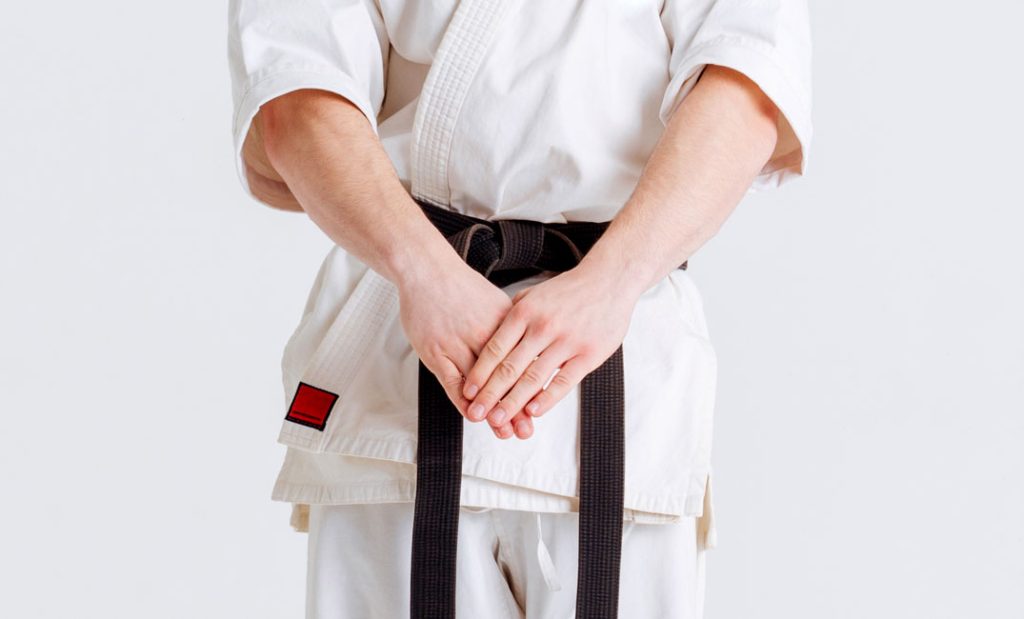
There are many aspects or points that need to be understood and practiced in order to execute a kata properly. Discover a few of these important points.
1. Be Present
During kata, keep your mind in the present moment, be fully present and engaged. Forget what you did before or what you will do after, just connect with the now.
2. Mushin and Fudoshin
During the practice of both kumite and kata, the delicate balance of Mushin and Fudoshin must be acquired. Mushin is an empty mind, a mind beyond thoughts and desire, entirely in the present moment. Fudoshin is an unshakable mind, a spirit burning with intention. Together, they represent the state of mind of a karateka, a mind that is paradoxically both “empty”, adaptable and determined.
3. One Strike, One Kill
During kata, every single attack should be executed with the intention of eliminating your opponent and every block should be performed with the intention of breaking his bones and crushing his limbs. Have a brave, resolute, and determined spirit.
4. Apply Techniques Properly
While performing kata, every routines and movement should be executed properly. Don’t “cut corners” thinking that you’ll do better the next time. There is no next time, only now. Each technique should be performed with perfect harmony and mechanical synchronicity, with particular attention on your hips and hara as they are the foundation of every single movement.
5.Invest Yourself into Your kata
When doing kata, invest yourself entirely in it, with your heart and soul. Be momentarily consumed by it. Give all you have in every single strike, in every single movement. Give the very best of yourselves each time. Execute every kata like it will be your last action on this earth before you die. See each kata as your life’s legacy.
6. Understand the Right Interpretation
Don’t do a kata blindly, without understanding it or knowing the meaning of its movements. Research, investigate and ask questions. It is fundamental to understand the nature and reason of each movement. The more you’ll understand a kata, the better it’s execution will be. Guaranteed.
Tips to Improve Kata
Here is a list of tips that will help you with improving the execution of your kata.
1. Relax
When practicing Karate, relaxation is a must, whether it is during kihon, kumite or kata practice. It is a false belief that muscular tension equals power. Typical Western thinking. Actually, it’s quite the opposite. The more relax you are, the more powerful you’ll generate and the faster you strike will be. Start each movement or technique firmly but relaxed, tense up right at the moment of impact or when blocking, then relax right after.
2. Practice Basic Kata Over And Over Again
Of course practicing advanced kata like Bassai Dai, Kanku Dai, and Empi is essential, but don’t neglect to practice the basic ones too. Repeat those Taikyoku, Juni No Kata and Pinan/Heian kata as often as you can. Master them to perfection, it will have a considerable impact on the quality of your advanced kata as well as your overall Karate.
3. Practice Every Single Day
Training kata once or twice a week is not enough, you need to repeat them over and over again to develop muscle memory. The more often you’ll do, the more likely you’ll be to cultivate what we call “synchronized and precise muscle memory”.
If you can’t go the dojo every day, which is quite difficult for most people, at least practice at home. You don’t have to do a one-hour session, but 20 minutes or so every day will make a big difference.
4. Break Down Your Kata Into Small Series
Katas are complex, most have around 30 to 60 moves, sometimes more. Break down your kata into series of 3-5 movements and practice each set until it becomes second nature. By breaking your kata into a small series of moves, you can concentrate on perfecting each part. Once you are happy with each “block of movements”, put it all together and practice it as a whole.
5. Practice in Front of a Mirror
Practicing kata in front of a mirror is an excellent way to detect small technical errors and correct them before they set in as bad habits. As the proverb says, “prevention is better than cure”.
6. Have Someone Highly Experienced Watch You
Sometimes, even if you practice in front of a mirror or film yourself, it’s hard to be aware of the finer technical points you must improve or also to see the bad habits you might have. That’s why it’s important to have someone highly experience watching you perform kata. It’s easier for another person to see our “faults” that it is for ourselves, so don’t hesitate to ask for help.
7. Film Yourself Doing Kata
Filming yourself doing kata will allow you to pick up technical errors that you might make. It is beneficial to have an instructor or experienced practitioner to tell you about your mistakes, but also, it’s also important to see it yourself. Filming yourself often will allow you to improve your kata and monitor your progress. I personally, do this often, and it helps me a lot.
8. Watch Other People Do Kata
Try to regularly watching people perform kata or videos of people performing, it will help you to build a clear and precise mental picture of how kata should be executed and will help you learn new things.
9. Visualize
Although it’s an uncommon practice in karate circles, visualization is one of the main tools used in sports psychology and by world-class athletes. It’s an incredibly powerful tool that will help you improving kata or any other aspect of your practice.
Visualization in sports or mental imagery is a way of conditioning for your brain for successful outcomes. Visualizing or purposely rehearsing a kata in your mind’s eye (or any other physical performance like kihon or kumite) will program your body and your mind for success. It is proven by science that when athletes visualize or imagine a successful competition, they actually stimulate the same brain regions as they do when they physically perform that same action.
PS: For more information about sports visualization read this article.
Bunkai, the Essence of Kata
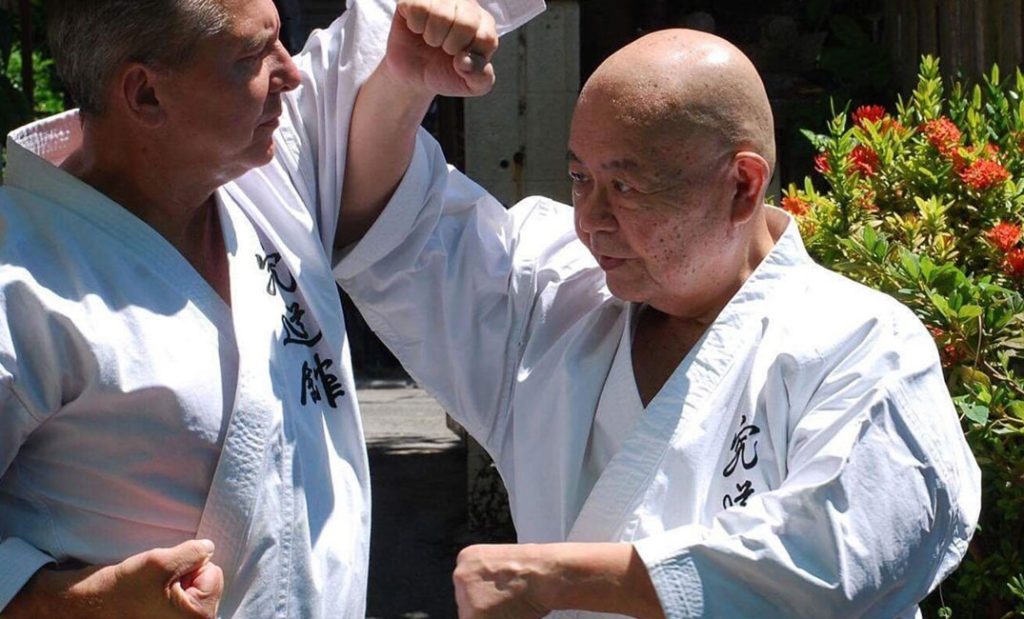
Literally meaning “analysis” or “disassembly” in Japanese, bunkai is a process of investigating and extracting the combat techniques from the movements of kata.
A Rare Practice
Bunkai is an aspect of Karate that is sadly often neglected. Many Karate schools don’t even teach it at all. Some Karate schools teach Bunkai that are only suitable for demonstration and “sporting” purpose. Without an understanding of the knowledge and techniques included within kata, Karate is a very poor art.
Execution vs. Knowledge
There is a world of difference between being able to merely perform the movements of the kata and truly understanding them. Bunkai allows Karate practitioner to “truly understand” a kata by reviewing the practical application of each kata movement.
No “Official” Bunkai
I think it’s important to understand that there is no official Bunkai for kata, the only applications that matters are those that actually work in real life. I would suggest that you actively study the application of Bunkai and not just repeat what you have been taught, it’s a great way to discover more about Karate.
How to Practice Bunkai?
Bunkai is practiced with a partner or a group of partners which execute prearranged attacks, and the one performing the kata responds with defenses, counterattacks, or other actions, based on parts of the kata.
It’s easy to practice a kata alone when you’re not dealing with your partner’s attacks, but it’s an entirely different matter when you have someone in front of you. Every kata movements are intended to be used in battle.
Kata are Designed to be Used in Combat
It is crucial that you understand this – every movement within the katas are designed to be used in real fights. This is not a dance. The primary function of every move is to disable or incapacitate an assailant in a self-defense situation.
When applying the kata’s techniques, your primary concern should be the movement’s effectiveness, not it’s aesthetic. That’s Hollywood. You should not be concerned by the “look” of a movement but by its practicality and efficiency against a living opponent.
Is Karate Enough to Make You Effective?
I’m in no way saying the practice of kata s “enough” to make a practitioner effective in real life self-defense. Kata is not an alternative to kumite or sparring, primarily because it doesn’t involve the free-flowing exchange of blows between training partners.
Here is what ancient masters had to say about the relationship between kata and kumite:
- Chojin Miyagi (founder of Goju-Ryu): “Through sparring practice the practical meaning of kata becomes apparent.”
- Hironori Otsuka (Wado-Ryu): “Martial Arts progress from kata, to kumite, to combat.”
- Choki Motobu (Founder of Motobu-Ryu): “Kumite is an actual fight using many basic styles of kata to grapple with the opponent.”
- Gichin Funakoshi (Founder of Shotokan): “Sparring does not exist apart from the kata but for the practice of the kata.”
Conclusion
As we saw, weapons ban imposed on the Okinawans at various points of their history profoundly influenced and refined the practice of karate and the kata as well.
After reading this article, it should be evident that there is numerous reason why the practice of kata is essential for karate practitioners. Because of all those reasons, please take the practice of kata seriously. Do every punch, every kick, every block, and every step wholeheartedly, without holding anything back. Honestly and sincerely give yourself to your kata.
Please, actively study the application of kata techniques, and only then you’ll realize by yourself, with experience, that the real purpose of Kata is to prepare both the body and the mind for actual combat.
Do you know kata applications?
- 10 Ways Meditation can Improve Your Karate - March 6, 2024
- Is Tai Chi Effective for Self-Defense? - February 16, 2024
- Do You Need to Add Ground Grappling Into Your Karate? - February 15, 2024

